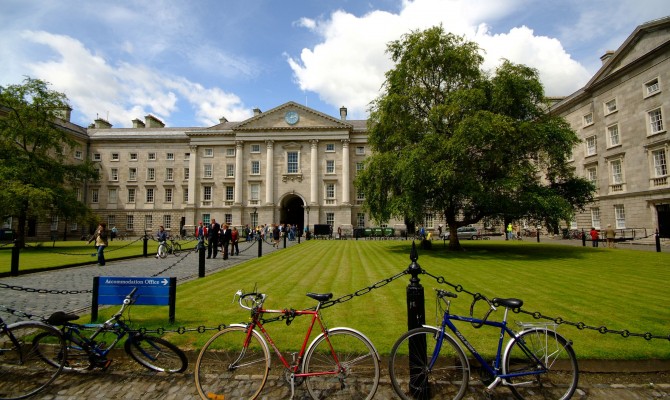Trinity researchers have released a set of ground-breaking maps showing wealth distribution in Ireland circa 1300. The maps can be used to determine the scale and impact of the medieval English colony using early 14th century parish incomes as proxies for local wealth.
Trinity PhD student Christopher Chevallier, supervised by Dr. Mark Hennessy, led the project. The research also quantifies wealth depletion brought on by the Great European Famine (1315-1317) and the impact of the Bruce Invasion (1315-1318) when Edward Bruce of Scotland claimed the High Kingship of Ireland.
Chevallier traveled to archives in Armagh, Paris, Kew, as well as to the Vatican Secret Archives in order to gain a greater understanding of medieval papal taxation and the surviving sources. He explained that these sources “offer a unique opportunity to map and quantify the economy of medieval Ireland; superseding the cultural, political, and economic divides of the island”.
The maps offer an improved understanding of the economic and wealth patterns of both the medieval English colony and Gaelic Ireland circa 1300. It allows the colony to be seen as network of wealthier urban cores surrounded by hinterlands, which was positioned to make use of the best soils for intensive agriculture, contributing to the generally higher density and wealth of the colony.
Comparatively, Gaelic areas were defined by isolated parishes, low tier wealth and environmental constraints, such as high elevation, mountainous terrain and land suited for pastoralism.
Map A shows the economic state of Connaught prior to the Bruce Invasion, while Map B reflects County Clare in the aftermath of the invasion. Map C shows parish density before the invasion.
Preliminary analysis of pre- and post-invasion figures suggest that accurate revaluations were made. Dioceses in Kilkenny, Cork and Tipperary were depreciated by between 24% and 47%. The Diocese of Dublin was particularly devastated, with an average depreciation of 68%, and nearly half of the parishes rendered too damaged to be revalued.
Chevallier sees potential for wider European studies working with papal taxation records, and has mapped parts of Great Britain and France. One of his ambitions is to produce an economic atlas including complete maps of Britain and France.
Chevallier stated that he hopes to “create an open digital atlas with my data along the lines of Trinity’s Down Survey website to allow researchers and the public to use and build upon the work”.
“From a local to national scale, the data is very versatile and can be used outside of geography; for example, Irish language studies and local history,” said Chevallier. He also highlighted the international, inter-institutional, and interdisciplinary opportunities the research allows.







